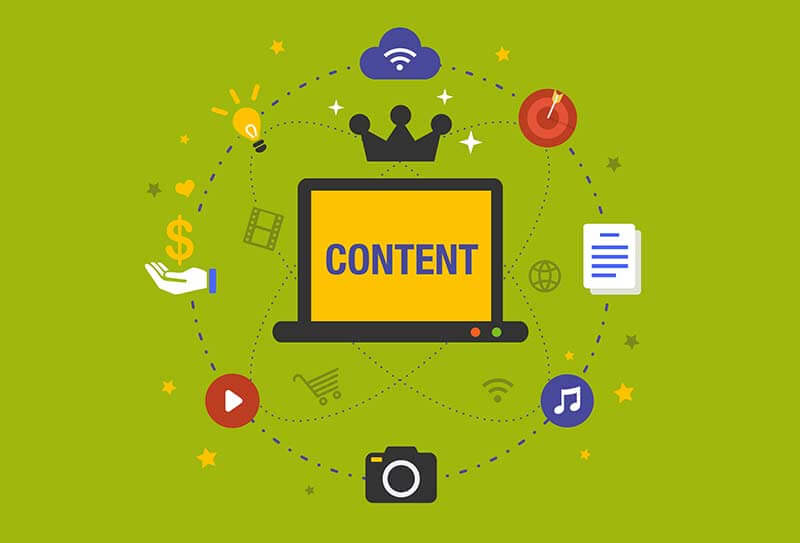Lead generation has altered dramatically in recent years. Following the COVID-19 pandemic; the quick move to digital modes of engagement enhanced buyer awareness and enabled decision-makers to explore for answers without having to contact salespeople. Customers in the B2B sector prefer digital service tools over traditional ones, are comfortable with remote selling, and expect to get the most out of the product or service they buy.
New lead generation trends have arisen as a result of these situations. Data-driven approaches, multichannel outreach, and automation tools have all become commonplace in B2B sales. Let’s take a look at the top lead generation trends to watch this year.
New lead generation trends to adopt in 2022
It is critical to keep up with the newest industry trends to stay ahead of your competitors. Here are the nine most important lead generating trends to implement right away to assist you to enhance your lead generation efforts:
#1 A data-driven strategy
The increasing relevance of data and analytics for B2B decision-making processes is one of the most noticeable changes in recent years. “The use of analytics is no longer limited to huge corporations with deep funds,” Forbes writes. It’s now commonplace, with 59 percent of businesses employing analytics in some form.”
One of the key reasons for retaining high-quality data is that it aids in team efficiency (52%), enhances cost savings in the company’s main operations (40%), and allows for more informed strategic decisions (37%), both in lead generation and sales processes.
The majority of C-level executives emphasize the importance of a data-driven approach in B2B firms (95 percent ). Adopting a strong data-driven culture in your organization will enable you to realize the full potential of your operations and develop a more efficient go-to-market plan.
#2 Platforms for customer data
Understanding the value of data is just the beginning of creating a data-driven lead creation strategy. Customer data platforms are one of the most recent approaches to managing the massive amounts of data available (CDPs).
“A packaged software that produces a durable, unified customer database that is available to other systems,” according to the CDP Institute. To put it another way, CDP anonymously develops a consumer profile by collecting data from several sources and putting it in one place.
You can gather the information from CRM systems, a person’s social media activity, internet usage, and so on. Essentially, a customer data platform (CDP) stores all of the information prospects leave behind when interacting with various platforms online, providing you with useful insights to help you improve your lead-generating process.
Last but not least, never break data gathering standards such as GDPR rules to prevent legal action, which could have severe ramifications for your company.
#3 Intent data
Intent data is another lead generation trend that is expected to grow in 2022. This type of information aids in identifying decision-makers who are actively seeking answers to specific business difficulties and are thus more likely to buy your product.

Third parties typically collect intent data over time and combine it with the information you already have on your website. Every blog prospects read every message they get, and every inbound and outbound engagement they make is logged to assist identify hot leads more efficiently.
Intent data can help you take your lead generation to the next level. You can target your ideal consumer more accurately and successfully if you know what terms they use in their Google searches, what sources they trust, and what topics they are most interested in.
#4 Account-based targeting
According to Gartner, a typical B2B buying group consists of six to 10 decision-makers, making targeting and personalization much more difficult. Account-based marketing (ABM) addresses this issue by focusing on a complete account with many decision-makers rather than reaching out to individual decision-makers each time.
According to the ABM Benchmark Survey Report for 2021, more than 98 percent of respondents have used or plan to deploy account-based marketing techniques soon. Since 2016, the use of ABM has increased by twofold (47 percent), demonstrating its effectiveness and value in B2B lead generation.
Smart targeting decisions increase your chances of locating and contacting those prospects that most closely match your ICP and may have a significant demand for your product. Account targeting, retargeting, and pre-targeting are just a few of the 2022 marketing tactics to remember.
#5 Sales specialization
As the sales process becomes more complex, a single salesperson can no longer do all of the sales-related responsibilities on their own. Prospecting, lead creation, outreach, and discovery call are all phases that require skilled professionals. As a result, various new lead generation roles have emerged on the market. Researchers, copywriters, campaign strategists, sales development reps (SDRs), and business development reps (BDRs) all have distinct expertise and abilities to learn.
According to Eric Quanstrom, CMO of CIENCE, the trend of B2B sales expertise will continue to grow. According to Quanstrom, “most fast-growing companies have used sales specialization as a core strategy of their go-to-market.” “And the reason for that is that individuals in different roles in a team can be better at each task in that chain than a single person who is in charge of everything.”
Business development and sales professionals were highlighted as one of the fastest-growing employment positions in LinkedIn’s 2021 Jobs on the Rise Report, which showed the newest job market trends. The number of people hired for these jobs has climbed by 45 percent year over year, and we can only expect this trend to continue in 2022.
#6 Omnichannel outreach
First and foremost, lead creation entails initiating a business conversation with the appropriate individual. With the increasing power of digital self-serve channels and remote human connections in recent years, omnichannel outreach will be one of the largest trends in 2022, with an increasing number of buyers opting for this strategy. When you communicate your message across numerous channels simultaneously, your chances of engaging a qualified prospect in a conversation skyrocket.
Outbound methods such as cold emails, phone calls, and social platform interactions are also increasing. You can organize all of these outbound channels at once with an effective sales cadence tool, maximizing the results of your outreach.
#7 Interactive content
In the competitive online world of 2022, each outreach campaign must capture the attention of the prospect. By the end of 2022, experts expect that video content will account for 82 percent of total internet traffic.

As a result, you’ll need to come up with your style of interactive content to make your message stand out in this sea of information. Your prospects or leads will be more engaged with your content if you use videos, quizzes, polls, infographics, and audio.
#8 Outsourcing
Following the COVID crisis, many businesses are searching for ways to minimize costs and improve the efficiency of their in-house employees. Outsourcing lead generation, according to Hubspot, is a good option if you don’t have the resources to hire, train, and maintain an in-house staff of SDRs. It allows businesses to lower the cost of a lead while entrusting the task to seasoned experts with a track record of successful lead generation campaigns.
Takeaway:
Lead generation in the future is expected to be data-driven, heavily reliant on automation and optimization, multi-channeled, and managed with a focus on the client’s needs. When it comes to lead generation strategies or trends, hire the best digital marketing agency and get top-notch results.





